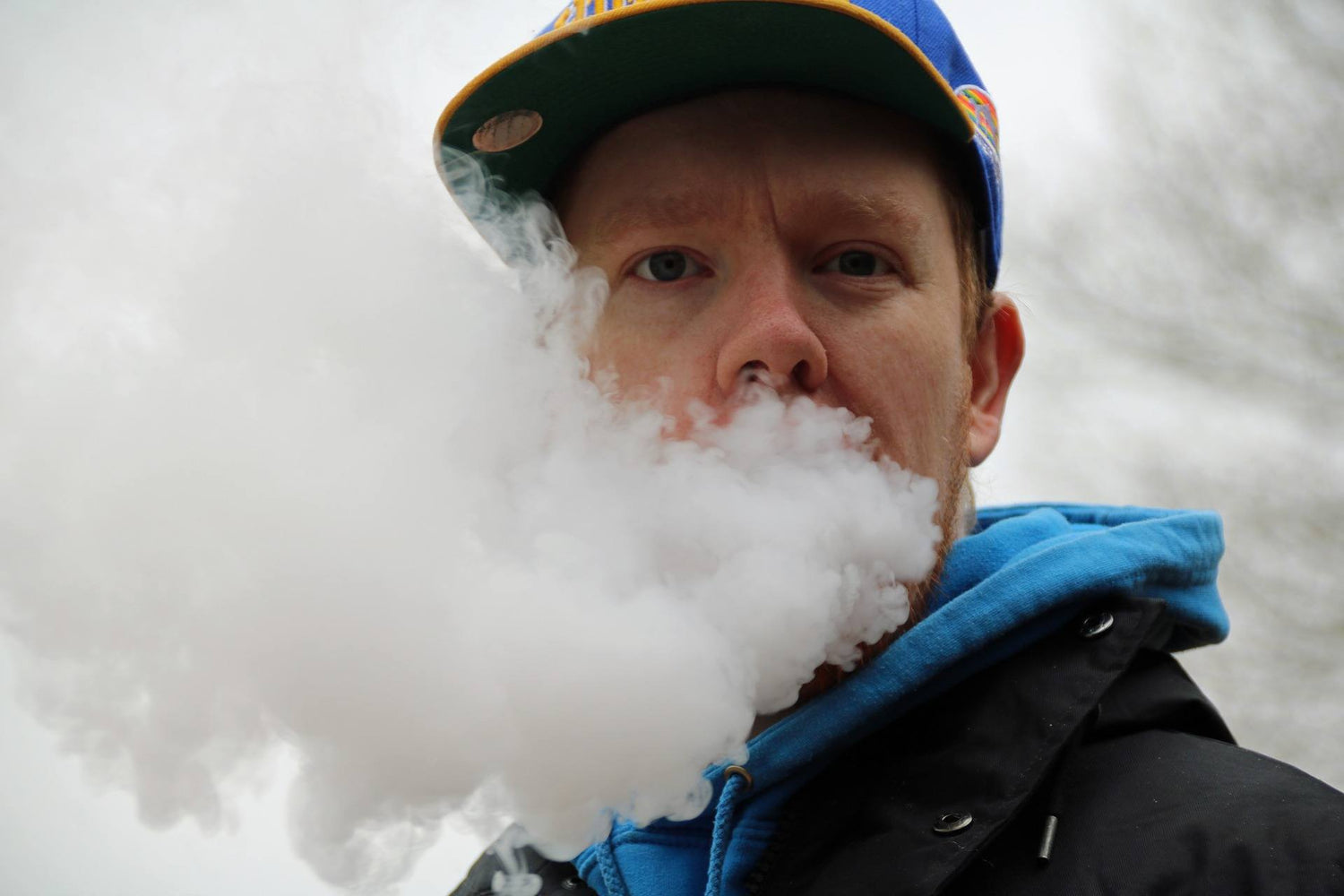Smoking kills. The Centres for Disease Control and Prevention claims that smoking is the leading cause of preventable death in the United States, accounting for one in every five deaths.
The deadly habit has prompted dozens of state and city-wide smoking bans indoors in workplaces, bars, restaurants and other public places over the last two-and-a-half decades.
As well as making smoking a less attractive proposition, these bans also protect non-smoking bystanders.
Just as drink-drive laws protect innocent road users from dangerous dunk drivers, smoking bans protect other people in the vicinity of a smoker from inhaling their harmful fumes.
After all, the person sat across from a smoker in a bar or restaurant hasn't personally assumed any risks - so why should they be exposed to risk by another person?
As vaping has grown in popularity, some lawmakers are seeking to apply the same logic to e-cigarettes.
But vaping and smoking are very different. And some arguments suggest that indoor vape bans actually hurt people who are trying to switch from tobacco to e-cigarettes.
We have written extensively in this blog about the differences between smoking and vaping, but it's important that we revisit some of the key health arguments here.
E-cigarettes do not produce tar or carbon monoxide - two of the most harmful by-products of combustible cigarettes. Extensive studies have shown that vaping is 95% safer than smoking.
E-cigarettes do, however, contain the powerfully addictive chemical nicotine. And no-one can be completely certain of the long-term risks associated with vaping.
Several states have already passed laws prohibiting vaping in places where smoking is also banned and thousands of private bars, restaurants and workplaces have introduced their own bans.
In this blog post, we investigate whether they are right to do so by asking whether second hand vapour is safe.
Is Second Hand Vapour Safe?
As with a lot of vape science, there are conflicting accounts.
One small study from the Bavarian Health and Food Safety Authority found that vaping worsened indoor air quality, specifically increasing the amount of nicotine, particulate matter, PAHs and aluminium.
Another study carried out in homes under "real-use" conditions found that e-cigarettes did increase the airborne nicotine in homes, but homes with combustible cigarette smokers had 5.7 times more airborne nicotine.
A third experiment, carried out in lab conditions found that similar levels of serum cotinine (which is used to measure nicotine) in people exposed to combustible cigarette smoke and those exposed to electronic cigarettes.
This final group of researchers concluded that short-term exposure to electronic cigarettes did not elicit a reduction in lung function or an increase in inflammation, which has been linked to cardiovascular disease. Volunteers that were exposed to second hand smoke from combustible cigarettes did experience these two negative functions.
Most of the studies concentrate on nicotine because this is one of the key by-products released from e-cigarettes. It is important to understand exactly what nicotine is and how it causes harm.
Nicotine is in tobacco cigarettes, but by itself it is not the most damaging ingredient. Tar, carbon monoxide and other dangerous chemicals are chiefly responsible for serious illnesses and death caused by cancer, lung and heart disease.
Nicotine is a dangerous in tobacco because it is highly addictive and gets smokers hooked on other dangerous carcinogens, which are either not found or are found in much lower levels in electronic cigarettes.
Public Health England looked closely at nicotine exposure in two landmark evidence reviews.
In their report ˜E-cigarettes: an evidence update, scientists found EC [E-cigarette] exhalations contained eight times less nicotine than cigarette exhalations. Estimating environmental nicotine exposure, however, has to take into account the fact that side-stream smoke (ie the smoke from the lighted end of the cigarette, which is produced regardless of whether the smoker is puffing or not) accounts for some 85% of passive smoking and there is no side-stream EC vapour. A study measuring nicotine residue on surfaces in houses of smokers and vapers reported only negligible levels from vaping, 169 times lower than from smoking.
Another study by the Royal College of Physicians was clearer. "There is, so far, no direct evidence that such passive exposure is likely to cause significant harm," they found.
Do Indoor Bans Hurt Vapers?
Many vapers use e-cigarettes as a way of getting nicotine without smoking. Although e-cigarettes are not approved by the FDA as a stop smoking aid, many vapers use the devices to switch.
One of the main arguments in favour of allowing e-cigarette use indoors and in public places is that it can encourage more tobacco users to make the switch to e-cigarettes.
As well as the relative health and cost factors, being indoors is a powerful incentive for smokers that are thinking about ditching tobacco in favour of e-cigs.
After years of huddling in dusty entranceways and freezing cold smoking shelters, they might once again be welcomed back into civil society at the same time as getting a nicotine fix.
This could encourage more people to ditch tobacco, which is a key health policy objective in the United States. But indoor vaping bans would remove this incentive.
Allowing vaping in places where smoking is not permitted could also minimize the discomfort and withdrawal symptoms that vapers experience when they are forced to share a smoking area with tobacco users.
People who have tried to ditch tobacco will know that cigarette cravings are powerful and sometimes mysterious.
Being around other people who smoke - whether it is at home, at work or while out socializing - can be a powerful trigger for smokers that are trying to ditch tobacco.
You may feel a strong temptation to smoke when you are watching someone else smoking or smell the smoke from a cigarette.
Most stop smoking advice will tell you to avoid cigarette smokers if you can, but if you are forced to share a smoking area with tobacco users then this becomes very difficult.






Leave a comment
This site is protected by hCaptcha and the hCaptcha Privacy Policy and Terms of Service apply.